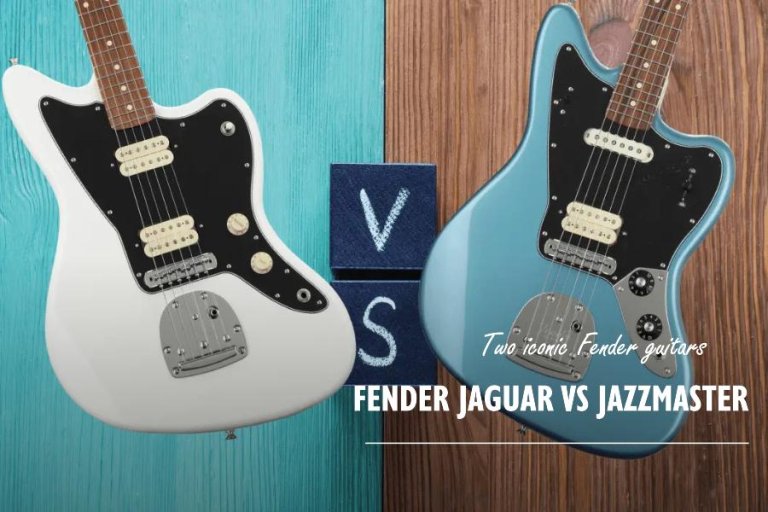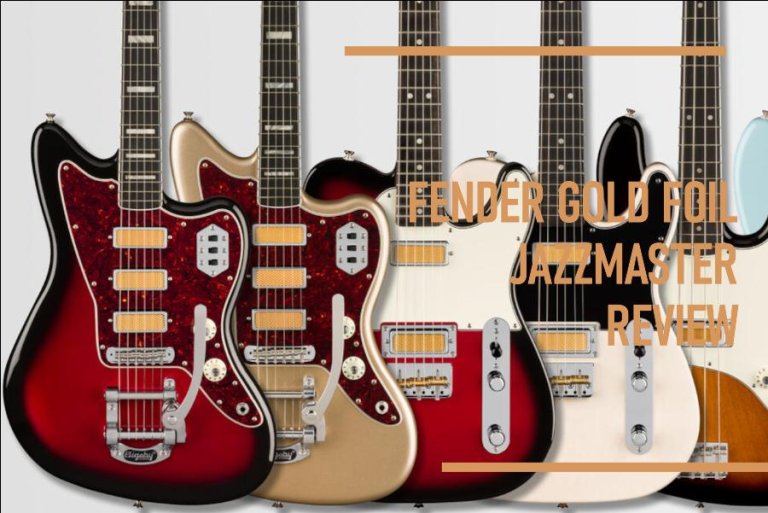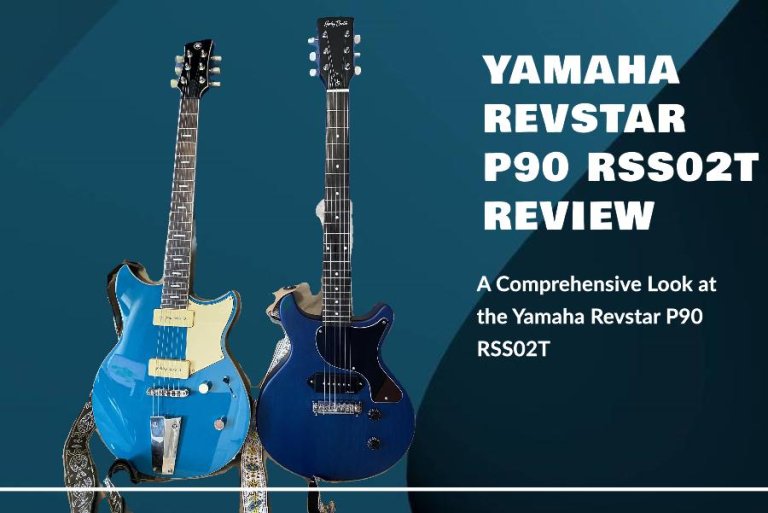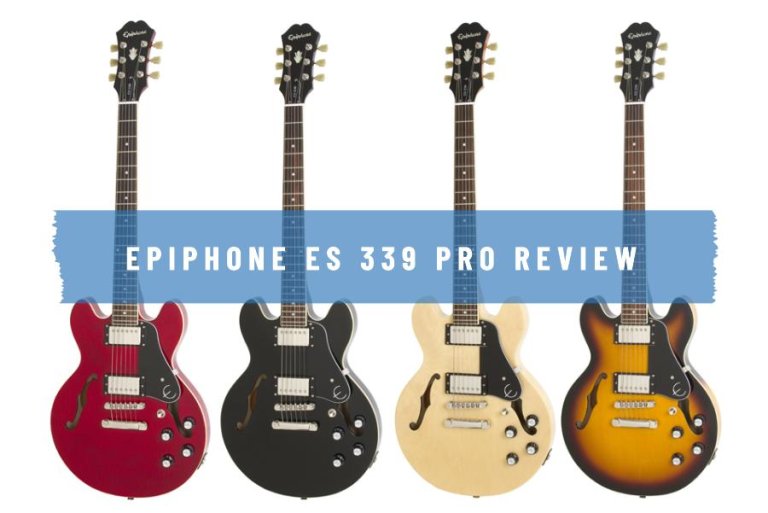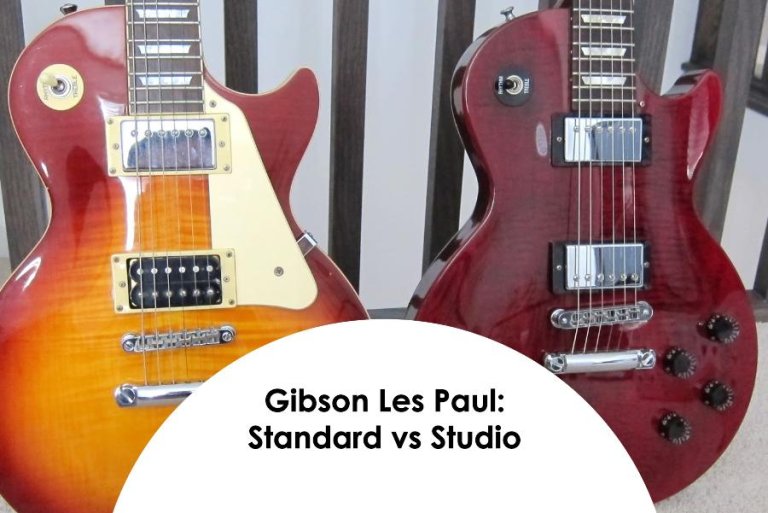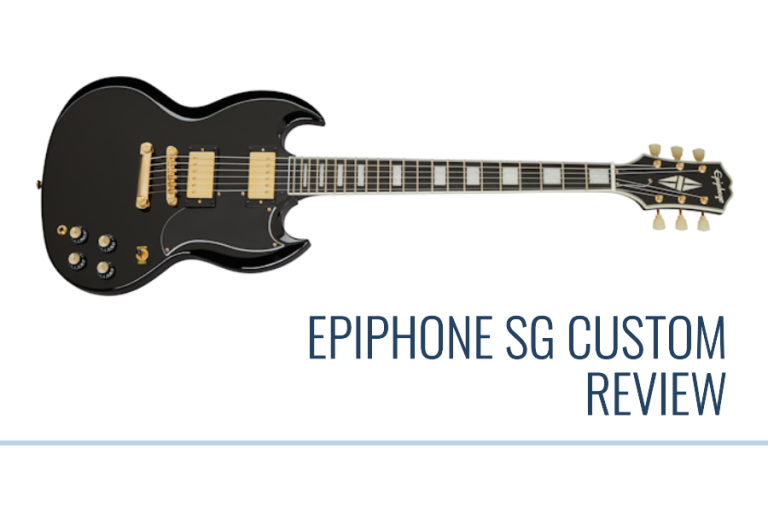Musicians all over the world are interested in and impressed by the Fender Acoustasonic. This review goes into great detail about what makes the Acoustasonic series not only a new addition to Fender’s already impressive line-up, but also an innovative instrument that blurs the lines between acoustic and electric guitars.
Physical Attributes
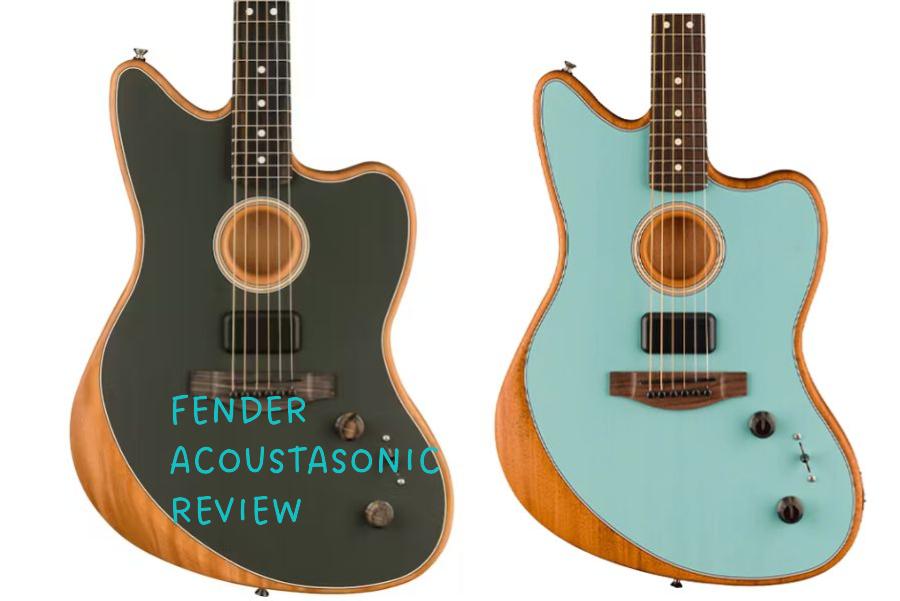
The look of this guitar is definitely a matter of taste, especially with that gray top finish. Some say it reminds them of wallpaper, but honestly, it’s all about the sound quality for most folks. And speaking of that “wallpaper” look, did you know those patterns are actually printed straight onto the guitar’s open-pore spruce tops? The matte finish isn’t just for looks—it might even play a part in how great this guitar sounds.
Now, let’s talk about the neck. If you’ve ever had your hands on an old Telecaster, that’s pretty much the vibe here. But when it comes to finishes, we’re stepping into a whole realm of personal preferences. This Acoustasonic sports a matte finish, stepping away from the glossy finishes we often see. Sure, glossy looks classic and sleek, but remember, those usually hit your wallet a bit harder.
Play Fender Acoustasonic With Amplifier
So, I’ve heard that playing the Acoustasonic Telecaster acoustically is quite a treat, even though its tone seems more akin to that of a travel guitar. But here’s the twist—it boasts a broader range of dynamics and tones. Intriguing, right? However, don’t expect it to belt out those rich, campfire-singing volumes when unplugged. It’s not quite there in terms of loudness, making it less ideal for those outdoor sing-alongs.
Yet, it’s not all about volume, is it? Many appreciate this guitar for its lower volume output compared to traditional acoustics, which is actually a big plus for those of us who practice in the quiet confines of our homes. It’s about making music without making roommates or neighbors part of your audience.
Now, even though it’s pitched as this versatile beast that sounds fab without an amp, trust me, you’d want to pair it with an amplifier to really unlock what it can do. Imagine plugging it into a setup decked out with a Fishman Loudbox Performer amp and running it through a lineup that includes a BOSS NS-2 noise gate, an Ernie Ball volume pedal, a BOSS GE-7 equalizer, and topping it off with a Fishman AURA Spectrum acoustic preamp.
System for electronics: Pickup and Mod Knob
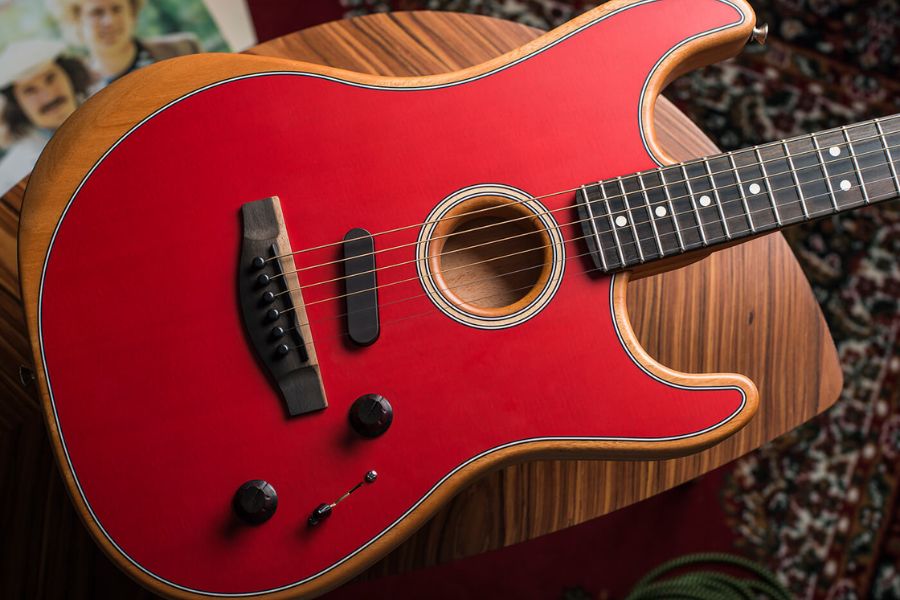
Mod Knob
Acoustasonic Telecaster doesn’t have the usual tone settings. You have this cool Mod knob instead. It’s kind of like a sound blender because each switch setting lets you mix between two different voices. But here’s the deal: if you want to really use the guitar’s magic, you need to play it a lot.
Let me tell you something else about how flexible it is. In the documentation, Fender lists five switch options, and each one has two voices. You have a huge range of sounds at your fingertips. When you turn on the Mod knob, you can mix these sounds to make your own special flavor.
Giving those directions a good read through is very important. It all comes down to how you want your sound to sound. Do some work with the instructions, and you’ll be able to find tones that sound like they were made just for you.
Pickups
You can get to the heart of the Fender Acoustasonic Telecaster and find electronics and pickups that are out of this world. This combination guitar has a setting that was made just for it thanks to a partnership with Fishman, a giant in the world of acoustic amps. Let me explain the three pickups that give this guitar its wide range of sounds:
In the beginning, there is the Acoustasonic Noiseless pickup. True to its name, it’s a quiet performer that keeps buzzes and hums from ruining your music party.
Then there’s a Fishman sensor hidden under the bridge saddle. Bring those classic guitar sounds back to life with this little gem. It gives you a pure acoustic sound that fills the room or campfire circle with ease.
There is more, though. It’s called the Fishman Acoustasonic Enhancer. The top of the guitar is picked up by it, which lets the taps and beats come through.
And here’s a great tip: the third setting on the switch is where you mix the acoustic and percussion sounds. By this, you can make something truly unique.
How Do The Switch Settings Work On Fender Acoustasonic?
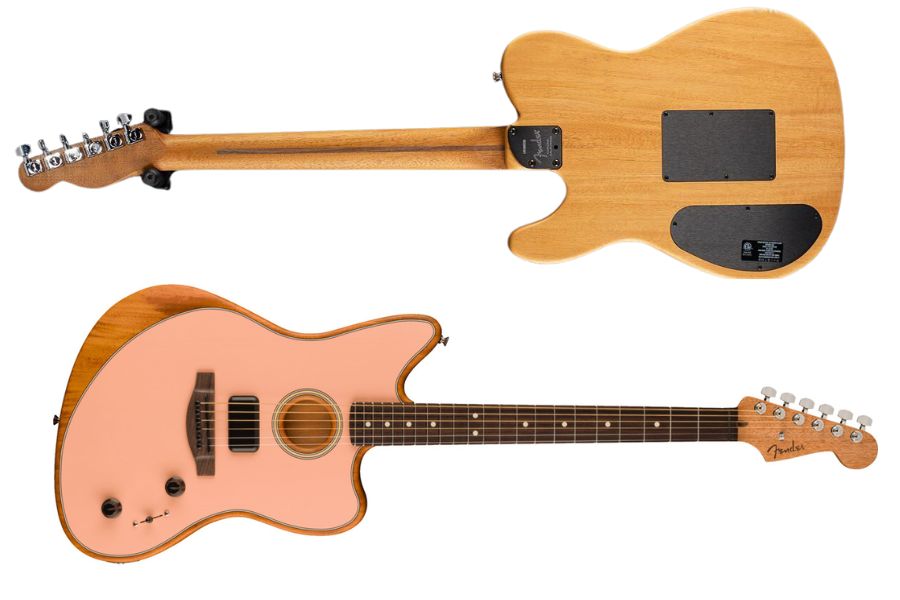
Electric Positions
Do you want to know how the electronics in the Fender Acoustasonic Telecaster work? This guitar is amazing. It shows off its unique design by using cutting-edge technology in both its finish and its electronics. Let’s look more closely at two switch settings that really show how versatile the sound is.
All-Electric Position (Position 1)
That clear, crisp single-coil sound that makes you think of a Telecaster Thinline from the early 1970s? Yes, that’s what the first sound gives you, but without the annoying hum that single-coils often have. It sounds great and echoes those famous electric Telecaster tones without making any other noise.
There’s also the second voice in this spot, which is “fatter” and smoother. This tone gives the sound more body, but it also makes it less clear. If you connect this to an acoustic speaker with a wide dynamic range, it might not sound good—it might sound too sharp, or you might have to change the treble settings. Here is a pro tip: An AB switcher could be your best bet because it can send the signal to an electric guitar amp, which will really make these sounds better.
Hybrid Electric and Acoustic Position (Position 2)
The first voice does a great job of capturing the sound of a Sitka Spruce top with a Mahogany dreadnought body. It sounds like an acoustic guitar should sound: full, rich, and soulful.
The second voice adds a little of the electric flair from Position 1 in a very smart way, giving it just the right amount of edge. I’m not sure what to do because I love how unique both full-on electric and pure acoustic tones sound. Mixing them up is interesting, but I don’t always use it.
This comes down to being able to adapt. With the Acoustasonic Telecaster, you can explore a wide range of sounds, from pure electric bliss to acoustic peace, as well as some interesting mixes in between. To get the best sound from this beauty, you may need to change the settings on your amp or even buy some extra stuff, like that useful AB switcher. Finding that sweet spot that speaks to your creative soul is everything.
Acoustic Positions
We’re going to look at some more switch settings on the Fender Acoustasonic Telecaster that really show Acoustic Position
Percussive Acoustic Position
This is a great place for people who like to add some beat to their playing. Along with the standard bridge pickup, it has a body pickup that is made for playing taps and slaps. The first person to speak? If you listen to a show on a guitar with a Sitka Spruce top and a Brazilian Rosewood body, it sounds so real and alive.
When you switch to the second voice, the body pickup gives you this cool mix that makes your percussion sounds stronger. Also, guess what? You can find the right mix by turning the Mod knob. It’s like being in charge of your own sound group.
Alternate Acoustic Position
This is where things start to get interesting. You can play two different kinds of acoustic guitars at the same time. When the first voice plays, an Engelmann Spruce top and Maple body guitar makes clear, bright sounds.
A bit of that electric zing is mixed with the warmth of a Sitka Spruce and Mahogany body in the second voice, which gives it a fuller, louder acoustic sound.
Also, when you play with the Mod knob and you open the door, the room is filled with different levels of sound light. Definitely a place that shines.
Core Acoustic Position
This is where the pure sound of an acoustic guitar can be found. The first voice sounds like a Sitka Spruce top with a Rosewood body. It has a strong bass and clear highs, but it’s a little softer than its cousins in other situations. The second voice brings out the brightness more. Its Alpine Spruce top and Rosewood body make it great for quiet fingerpicking times.
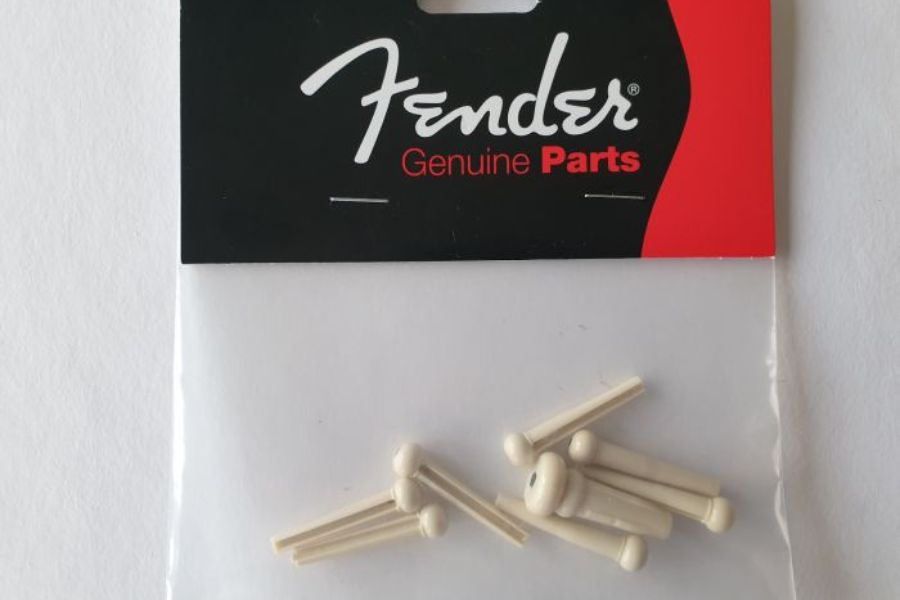
How To Use And Build Fender Acoustasonic Telecaster More Effectively?
The Acoustasonic Telecaster was carefully made with attention paid to the materials used, the structure, the sound quality, the ease of upkeep, and the ability to play. Now I will tell you about the parts, how to handle the guitar, fix any problems that might arise with its design.
Micro USB Connector: Be careful with the micro USB connector that is used to charge the electronics built into the guitar. Because it is fragile and could get broken if you pull too hard, that said, not to charge it while you play to avoid damage.
Output Jack and Cable Compatibility: The guitar has a normal ¼” recessed monophonic guitar jack. Using the right-angle plugs, especially ones with bigger lengths might not make good contact. In one case, moving to a 90-degree Ernie Ball cable fixed the connection problem, but the barrel of the cable still pressed against the outer ring of the jack.
Charging and Electronics: The built-in battery needs to be charged before the electronics can be used, which means the guitar has to be plugged in. Connect the guitar’s 5V micro USB 2 cord to a wall adapter, a charging block’s USB port, or your computer to charge it. It takes about four to five hours to fully charge, and it should last for twenty hours when plugged in. You can charge even while you play.
Balance and Weight of the Guitar: The Acoustasonic Telecaster is very light, good when you have back or arm problems. But it is a little nose-heavy, though, so a strap might help you keep your balance while you play.
String Preferences: When it comes to strings, the factory strings give it really bright sound. When this is too hard to bear, you can replace them with Ernie Ball Paradigm strings in the Phosphor Bronze color, Phosphor Bronze strings make the sound softer. Also, Paradigm strings are long-lasting and easy-to-clean.
Fretboard and Neck Construction: The fretboard is made of highly figured ebony, most likely Macassar ebony. With a traditional bolt-on design, the neck is made of mahogany. The adjusted truss rod, and the guitar’s staggered-height tuning pegs get rid of the need for string trees. All makes the strings tighter and easier to play.
Body Design and Resonance System: The spruce top maximizes resonance and only needs two braces because of the way it’s built. This makes the top move around a lot so that the sound can be heard better. The Acoustasonic has Fender’s Stringed Instrument Resonant System in the soundhole, which is like a speaker horn. Therefore, it is great with sound output and resonance.
Access and Maintenance: The guitar has two pieces that can be taken off the back, getting to the electronics for repairs is easy. The bridge is usually made with bridge pins that hold the strings in place. This makes it easy to change the strings.
Wrapping Up
My time with the Acoustasonic Telecaster, especially when paired with my own amplifiers, has been fantastic. Its simplicity, paired with effective controls, really stands out for me. The guitar’s acoustic performance alone impressed me more than other hybrids I’ve played, including the Taylor T5.
However, if there’s one hiccup in this whole experience, it’s the price tag. In my view, the Acoustasonic Telecaster is priced a bit steeply. It’s worth it, though, because with a little extra money, you can open up a huge world of options and choices in music world.



